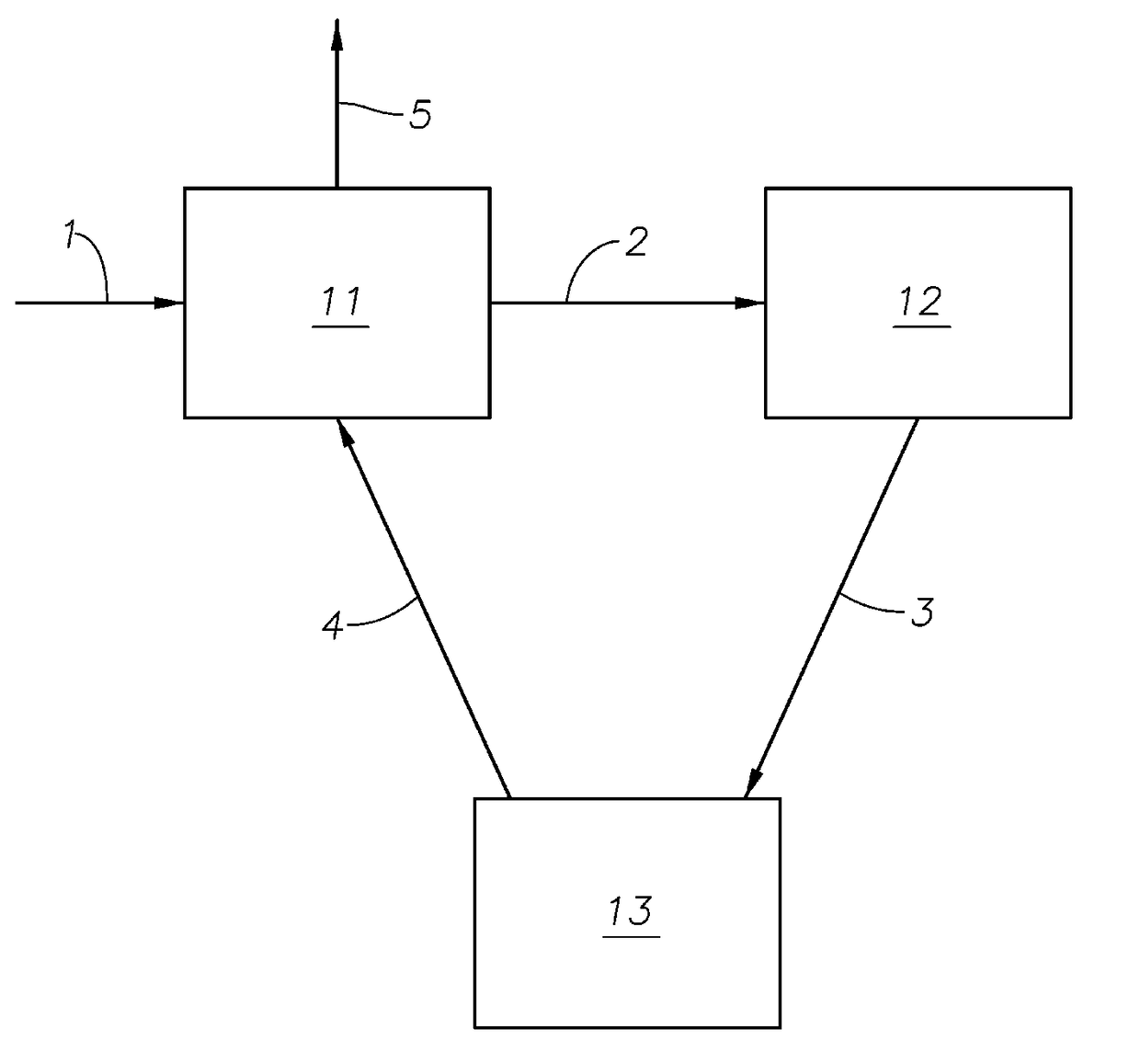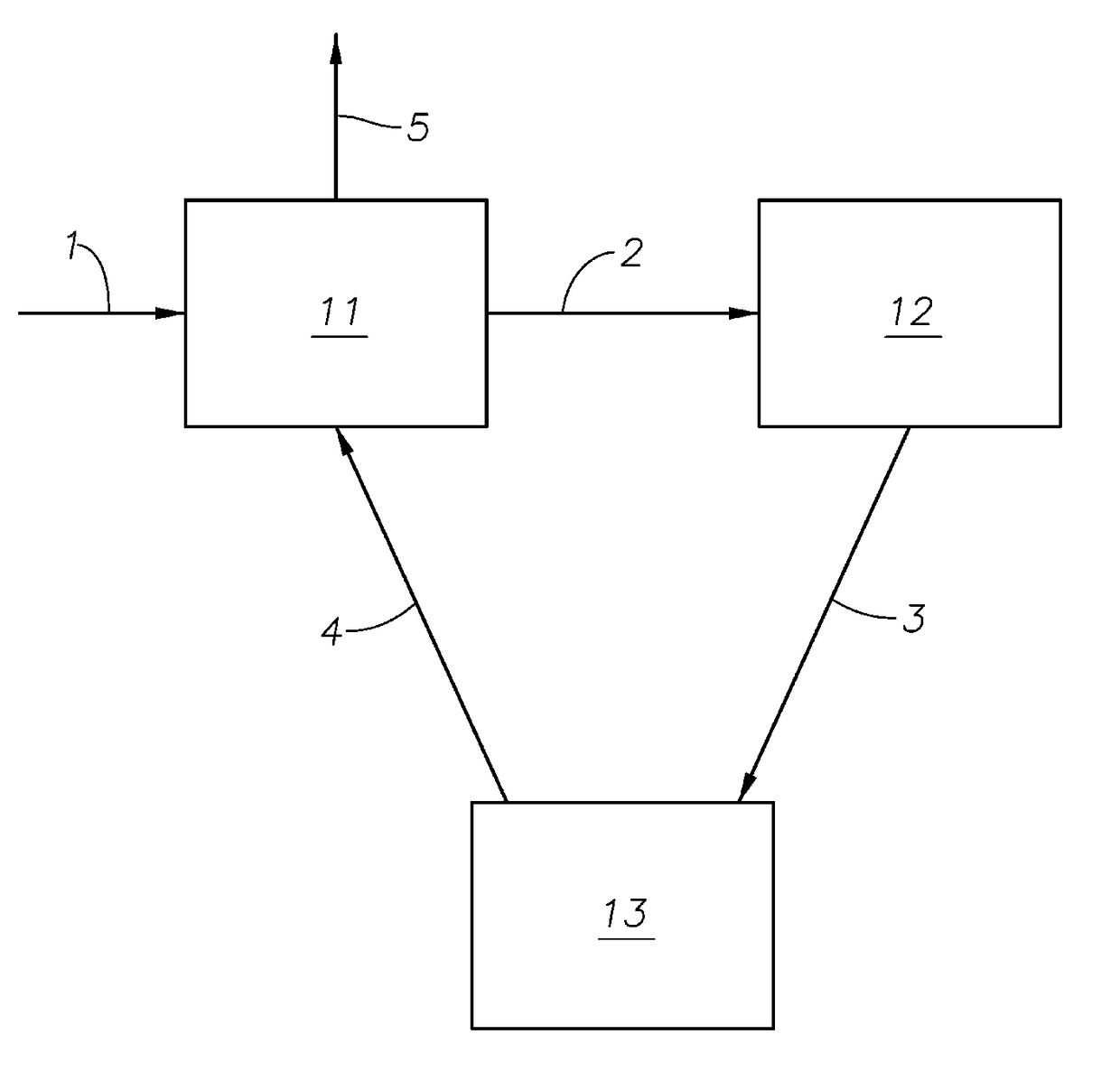Process of Producing Paraxylene by The Methylation of Toluene and/or Benzene
a technology of methylation and toluene, which is applied in the direction of hydrocarbon preparation catalysts, organic chemistry, chemical production, etc., can solve the problems of limited yield, high operating and capital costs, and the paraxylene of such mixtures tends to require superfractionation, so as to improve the utilization of methanol, increase and reduce the amount of methanol
- Summary
- Abstract
- Description
- Claims
- Application Information
AI Technical Summary
Benefits of technology
Problems solved by technology
Method used
Image
Examples
Embodiment Construction
[0012]Described herein is a process for producing paraxylene by the catalytic alkylation of benzene and / or toluene with methanol. In prior art processes, water is typically co-injected with the methanol to improve the utilization of methanol, increase the amount of methanol that reacts with the benzene and / or toluene, and decrease the amount of methanol that decomposes to undesirable carbon monoxide, carbon dioxide, or water, or reacts with itself to produce unwanted light olefinic gases. Rather than using purified methanol and co-feeding water as is taught in the prior art, crude or unpurified methanol that contains at least 5 wt %, such as between 5 and 35 wt %, water, based on the total amount of water and methanol feed, can be used as the alkylating agent, reducing the need to co-inject water at least partially, if not completely. Thus, it should be appreciated that in at least some embodiments no additional water is co-injected along with the unpurified methanol. Using unpurifi...
PUM
| Property | Measurement | Unit |
|---|---|---|
| pressure | aaaaa | aaaaa |
| temperature | aaaaa | aaaaa |
| pressure | aaaaa | aaaaa |
Abstract
Description
Claims
Application Information
 Login to View More
Login to View More - R&D Engineer
- R&D Manager
- IP Professional
- Industry Leading Data Capabilities
- Powerful AI technology
- Patent DNA Extraction
Browse by: Latest US Patents, China's latest patents, Technical Efficacy Thesaurus, Application Domain, Technology Topic, Popular Technical Reports.
© 2024 PatSnap. All rights reserved.Legal|Privacy policy|Modern Slavery Act Transparency Statement|Sitemap|About US| Contact US: help@patsnap.com









